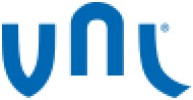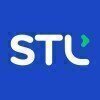Filter interviews by
Exicom Technologies Interview Questions, Process, and Tips
Exicom Technologies Interview Experiences
3 interviews found
I applied via freshersworld and was interviewed in Jul 2023. There were 2 interview rounds.

(6 Questions)
- Q1. They'll briefly ask about your Final year project and Intership project. Each and every component (sensors) used in it.
- Q2. Questions about 2g 3g 4g 5g how it is different from each other.
- Q3. Draw me the block diagram of Digital communication system
- Ans.
A digital communication system consists of various blocks like source encoder, channel encoder, modulator, channel, demodulator, channel decoder, and sink decoder.
Source encoder: Converts input data into a digital format.
Channel encoder: Adds redundancy to the data for error detection and correction.
Modulator: Converts digital data into analog signals for transmission.
Channel: Represents the medium through which the si...
- Q4. They'll ask about radio frequency
- Q5. Different types of Frequency like HF,VHF,UHF,
- Ans.
Different types of Frequency bands used in RF communication are HF, VHF, and UHF.
HF stands for High Frequency and ranges from 3 to 30 MHz.
VHF stands for Very High Frequency and ranges from 30 to 300 MHz.
UHF stands for Ultra High Frequency and ranges from 300 MHz to 3 GHz.
- Q6. Antenna based questions
Interview Preparation Tips
- Radio frequency
- Mobile network
Do not mention unnecessary things in resume.
Go through about your project and Intership before attending interview
Be confident, clear and loud
All the best guys
RF Engineer Interview Questions asked at other Companies
I applied via Walk-in and was interviewed in Sep 2024. There was 1 interview round.
(1 Question)
- Q1. Tell me about yourself
- Ans.
I am a dedicated and detail-oriented Tender Executive with a strong background in managing tender processes and ensuring compliance.
I have X years of experience in handling tender submissions and negotiations
I am proficient in analyzing tender documents and preparing competitive bids
I have a track record of successfully winning tenders for my organization
I am skilled in building relationships with clients and stakehold
Tender Executive Interview Questions asked at other Companies
I applied via Campus Placement and was interviewed in Dec 2023. There was 1 interview round.
(2 Questions)
- Q1. Rf bands and their frequencies
- Ans.
RF bands are specific ranges of frequencies used for communication purposes.
Common RF bands include VHF (30-300 MHz), UHF (300 MHz - 3 GHz), and microwave (3 GHz - 30 GHz)
Each band has specific applications, such as VHF for FM radio and UHF for TV broadcasting
Higher frequency bands like mmWave (30 GHz - 300 GHz) are used for high-speed data transmission
- Q2. Communication modes using microcontrollers
- Ans.
Communication modes using microcontrollers include UART, SPI, I2C, and CAN.
UART (Universal Asynchronous Receiver/Transmitter) for serial communication
SPI (Serial Peripheral Interface) for high-speed communication with multiple devices
I2C (Inter-Integrated Circuit) for communication between multiple ICs
CAN (Controller Area Network) for robust communication in automotive and industrial applications
Interview Preparation Tips
RF Engineer Interview Questions asked at other Companies
Top trending discussions






Interview questions from similar companies

Interview Preparation Tips

I applied via Referral and was interviewed before Nov 2021. There were 2 interview rounds.

(2 Questions)
- Q1. What kind of device are you working on?
- Ans.
I am currently working on designing and testing a 5G small cell device.
Designing and testing a 5G small cell device
Working on optimizing the device's performance
Collaborating with cross-functional teams to ensure successful deployment
Conducting field tests to evaluate the device's capabilities
- Q2. How much gain was there?
Interview Preparation Tips

I applied via Other and was interviewed before Mar 2018. There were 3 interview rounds.
Interview Questionnaire
4 Questions
- Q1. Serivece expression plz told
- Q2. Customer choice given service and reply best response
- Q3. How much transfer customer
- Ans.
The question is unclear and lacks context.
Request clarification on what is meant by 'transfer customer'
Ask for more information about the specific role and responsibilities of an Assistant Manager
Seek clarification on the purpose or objective behind the question
- Q4. 6000/ customer satisfaction guaranteed service
Interview Preparation Tips
Skills: Communication

I applied via Referral and was interviewed before Sep 2021. There were 3 interview rounds.

It includes technical part from electronics and coding
(2 Questions)
- Q1. General question on digital circuits
- Q2. College projects and responsibility on that college project
Interview Preparation Tips

I was interviewed before Sep 2016.
Interview Questionnaire
1 Question
- Q1. It was an online technical test. Questions were related to ME outlook, mobile device management , Networking and many more
Interview Preparation Tips
Experience: It was a written English grammar test to analyse how grammatically sound you are.
Tips: Just revise your basic English grammar like prepositions verbs nd essay/paragraph writing
Round: COMMUNICATION SKILLS Round
Experience: In this round they ask you to speak something on the given topic or sometimes group discussion . Basically they test your vocabulary, your thought process, pronunciation, accent and above all confidence.
Tips: Be confident in whatever you speak. Remember if you get nervous you will need with your words .
Round: Technical Interview
Experience: This was an online test and it had 50 questions all objective types.
Tips: Be technically sound. You cannot Google them as these search engines are blocked
College Name: Babu Banarasi Das National Institute Of Technology And Management (BBDNITM)

I applied via Recruitment Consultant and was interviewed before Sep 2018. There were 4 interview rounds.
Interview Questionnaire
1 Question
- Q1. overloading ,inheritance concepts,structures,pointers
Interview Preparation Tips

Interview Questionnaire
2 Questions
- Q1. Basic Programming Questions, Data structures, SQL queries
- Q2. This was the most simple one, they simply asked introduce yourself and fine with night shifts.
Interview Preparation Tips
Exicom Technologies Interview FAQs
Recently Viewed
Tell us how to improve this page.
Interview Questions for Popular Designations
Exicom Technologies Interview Process
based on 3 interviews
Interview experience
Interview Questions from Similar Companies
Fast track your campus placements
Exicom Technologies Reviews and Ratings
based on 14 reviews
Rating in categories
|
Design Engineer
4
salaries
| ₹0 L/yr - ₹0 L/yr |
|
Mechanical Engg. Design
4
salaries
| ₹0 L/yr - ₹0 L/yr |
|
Radio Frequency Engineer
4
salaries
| ₹0 L/yr - ₹0 L/yr |
|
Graduate Engineer Trainee (Get)
4
salaries
| ₹0 L/yr - ₹0 L/yr |
|
Mechanical Technician
4
salaries
| ₹0 L/yr - ₹0 L/yr |

Sterlite Technologies

Tejas Networks

Vihaan Networks

Bharti Airtel
- Home >
- Interviews >
- Exicom Technologies Interview Questions











